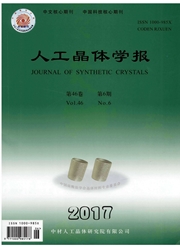

 中文摘要:
中文摘要:
多晶硅生成工艺中的副产物氯硅烷残液,具有腐蚀性强、产量大等特点。采用多晶硅副产物氯硅烷残液为原料进行水解反应生成二氧化硅。研究了以不同水解方式在不同水解体系中引入位阻剂及该位阻剂的时效性对二氧化硅团聚的影响以及机理研究。结果表明:气-液反应的水解方式产出的二氧化硅呈现颗粒状具有颗粒特性;水解体系中引入位阻剂后产物二氧化硅分散性好,颗粒均匀、粒径大小在2μm左右;并且证实了位阻剂的位阻作用具有时效性。
 英文摘要:
英文摘要:
Chlorosilane residue is the by-product in the process of polysilicon production, which is highly productive and high corrosive. In the paper, chlorosilane residue was used as raw material to product silica dioxide via hydrolysis. Additionally, the mechanism of silica dioxide agglomeration and the effects of different methods of hydrolysis and surface active agent on the process of chlorosilane residue hydrolysis were investigated. The results show that the silicon dioxide is generated via gas-liquid reaction of hydrolysis and the product show granular particle characteristics, after adding the surface active agent, the silica dioxide presented good dispersion, in a uniform particle size of 2 μm, moreover, the steric effect of surface active agents has timeliness.
 同期刊论文项目
同期刊论文项目
 同项目期刊论文
同项目期刊论文
 期刊信息
期刊信息
